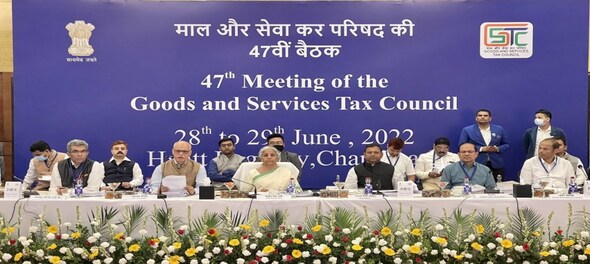
Goods and service tax (GST) was envisaged as 360-degree tax reform to supersede the anomalies engrained in the erstwhile indirect tax structure. GST has not only reformed the tax structure but also transformed tax compliance and tax administration. GST laws have been constantly amended as the endeavour of the government remains to build a robust and transparent tax system. The relentless efforts of the government have given us a tax model which is closely monitored by various countries. As GST approaches its half-decade milestone, it is worthwhile to address some challenges.
The delay in the constitution of the statutory GST Appellate Tribunal deters the dispute resolution mechanism. GST has given a steep rise in litigation mainly due to equivocal legal provisions and the mannerism of the officers in passing non-speaking orders. Adding to this turmoil, the delay in constituting the GST Appellate Tribunal is placing a burden on high courts. Adding to the complications, the composition of the GST Appellate Tribunal where the technical members exceed the judicial members may affect the independence of the judicial fora.
The need to streamline law, compliances and procedures under the GST laws is the need of the hour to make GST effective. One of the major challenges is that the compliance portal viz GSTN is yet to achieve its full potential. It is imperative to highlight that from a credit standpoint the GSTN portal has not achieved the ability to match the effectiveness of invoices. It is arguably the primary reason for fraud and fake invoices. The fundamental idea behind the digitalisation of returns was to ensure proper compliance leading to a proper streamlining of credit and taxes. GST was introduced with the matching concept wherein the invoices of the supplier and the recipient would be matched, thereby avoiding tax leakages and providing a smooth flow of credit.
As per the initial concept, form GSTR-1 was filed by the supplier which led to the auto-population of form GSTR-2A of the recipient. Consequently, the recipient would file its form GSTR-2 which would auto-populate form GSTR-1A of the supplier which in turn would highlight the non-matched invoices/amounts. However, neither form GSTR- 2 nor form GSTR-1A is active thereby causing ambiguity and uncertainty.
To the extent, the taxpayer has a valid invoice and has paid the GST component to vendors, the cost is eligible as credit, then the input tax credit should not be denied only on the basis that the vendor has failed to file its GST return. This mechanism introduced by the government results in huge credit blockages. To curb this difficulty, the government introduced e-invoice for selective taxpayers who have an aggregate turnover of more than Rs 20 crores. However, the same does not provide a holistic solution for B2C invoices which accounts for a majority of credit frauds and fake invoices.
Lastly, anti-profiteering laws have been enacted with the noble intention of safeguarding the interests of consumers. However, the concept is not free from criticism. These provisions were introduced with limited enforcement to safeguard the interest of the consumers. However, authorities that decide profiteering complaints have ended up creating a price regulation which adds to the dismay of the taxpayers. The provisions fail to provide a methodology to guide businesses in determining the quantum of profiteering and commensurate reduction in price.
ALSO READ | View: The compensation cess saga continues
GST was introduced with the promise and outlook of streamlining the tax system from inception. It was always an incredible and formidable task to subsume erstwhile diverse tax regimes into a unified tax regime. India is progressively moving towards a superior tax regime which can also be deduced by the fact that many global economies are borrowing our jurisprudence and examining our GST model. The jurisprudence with respect to the levy of IGST on ocean freight and pre-import conditions/export-related incentives are taken as standard models for examination by many countries.
The GST system is steadying each passing day. The efforts made by the tax administration towards simplification and meticulous compliance are conspicuous given the buoyancy witnessed in the GST collection. It is apparent that GST has exhibited a huge leap of evolution through law and policy modifications, mechanisation of compliance, etc. However, there are certain facets where the government must work to address the concerns of the industry for accomplishing ease of doing business in India. Considering the size, diversity and complexities of our nation, we must take a pause and acknowledge the creditable work by the finance minister and her team whose endeavor remains to provide us with a better and a robust tax system with each passing moment!
—Abhishek A Rastogi is Partner at Khaitan & Co. Views in this article are personal and do not constitute legal/ professional advice of Khaitan & Co.
Read other articles from the author here
(Edited by : Ajay Vaishnav)
First Published: Jun 28, 2022 11:58 AM IST
Check out our in-depth Market Coverage, Business News & get real-time Stock Market Updates on CNBC-TV18. Also, Watch our channels CNBC-TV18, CNBC Awaaz and CNBC Bajar Live on-the-go!


BJP is planning to ban RSS, says Shiv Sena (UBT) chief Uddhav Thackeray
May 18, 2024 8:01 PM
Punjab Lok Sabha elections: Complete list of Congress candidates
May 18, 2024 4:08 PM
Punjab Lok Sabha elections: Check full list of AAP candidates and constituencies
May 18, 2024 12:59 PM
PM Modi, Rahul Gandhi election rallies in Delhi today: Here are the routes to avoid
May 18, 2024 11:28 AM

